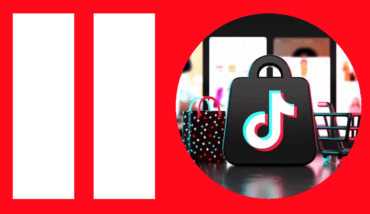James Hilton walks us through the new and massive opportunity for advertisers in the London underground’s Wi-Fi network
London’s underground has always provided advertisers with a captive audience. Other than reading newspapers, looking at your smartphone, tablet or eReader, there’s little else to look at while waiting for the next train, which is why adverts can provide a welcome distraction. More than 1 billion passenger journeys are made each year, offering one of the best opportunities to target Londoners. The introduction of digital adverts on escalators and platforms has made advertising more engaging, offering a marketing opportunity like no other. The introduction of Wi-Fi is now able to bring millions of smart-devices in the pockets of tube-users to life, presenting an opening for brands, London attractions, retailers and the entertainment industry to engage and captivate an audience like never before.
Initially offered over the Olympic summer, the free Wi-Fi service had more than 700,000 commuters and visitors sign up, accumulating more than 1 million sessions each day. Renault and eBay were the first brands to sign up as advertising partners. Unsurprisingly, Virgin Media extended the trial until the end of 2012, no doubt due to the high usage numbers and proof of Virgin Media’s network speed. More recently, EE andVodafone announced that in 2013 their customers will benefit from free access to keep them connected. Thanks to the speed of Virgin Media’s underground network, the opportunity to offer interactive augmented-reality based campaigns will now come into its own.
Entertain me
Augmented reality (AR) has been used to varying levels of success by magazine and newspaper publishers for some time. I’ve noticed, looking at people reading magazines, how awkward they look, holding the magazine at a distance to interact with a campaign. On the underground, this problem disappears. Suddenly any poster campaign can become an interactive window.
Using AR, movie posters could suddenly spring to life. Take, for example, the new Hobbit film. Pointing at a movie poster on the platform could make the poster appear that it crumbles away, showing Middle Earth and the trailer of the film to start playing or make commuters feel as if they are seeing into Tolkien’s imagined world. Instantly pointing at posters becomes more of an experience leading to higher cognitive recall and immersion. This could also allow commuters to find the nearest cinema and book tickets directly from their phones. Music-related posters could preview albums or enable commuters to pay for and start downloading songs whilst waiting for the next train. Theatre advertising could make the show come alive or bring up reviews, links to ticket offices or play previews.
By helping to drive interest and awareness in a creative and engaging way, advertising no longer needs to be static. Car manufacturers can create digital showrooms underground, where customers can explore cars, see 3D models or see adaptive videos. How cool would it be to see a car driving along the track or see a tropical paradise floating in front of you on a dreary January morning?
Next time you are waiting for a train, look at posters and let your imagination go wild with the possibilities of AR.
Beyond the poster
Of course, not all phones are capable of augmented reality and not everyone will want to point their phones at posters. But that’s OK: companies now have the opportunity to target specific stations to serve brand-building adverts as users log on to the network.
While none of the results from the eBay or Renault campaigns have been published, the use of full-page mobile advertising opens up the chance for short bursts of clickable branding.
Furthermore, the personal nature of mobile devices means that adverts can be tailored contextually to location, language, device type, network and, in some cases, app awareness.
By using these types of data points, ads can be targeted towards individuals to make them more effective. It comes back to the fact that there are very few places where adverts have such a captive audience. Ignoring the opportunity to make those adverts come alive and even personalised for the millions of ABC1 users who travel on the tube every day would be a serious oversight on the part of marketers.
Performance Tracking
According to CBS, consumers spend around three minutes on platforms engaging with adverts. Research has also shown that 79% of commuters have been somewhere, bought something or looked something up as a direct result of tube adverts.
The last part of that statistic is the key one here. Commuters are likely to look something up, but that requires them to remember an advert or search term. With Wi-Fi, they can now engage with brands straight away. Thanks to mobile touch points, such as QR codes or mobile search terms, it will now be feasible for brands to understand the performance of their underground campaigns like never before. This could help to improve the success of campaigns by indicating where campaigns perform well, or where they may need to be changed to increase engagement.
There is also the first-mover advantage. Brands that create truly innovative campaigns will benefit from media awareness. This will help to drive engagement with the campaign as consumers explore new technology around new types of advertising. With other commuters watching and wondering what people are doing with their phones, this can lead to the vital word-of-mouth element helping to help drive interest and awareness.
Now is the time that brands and marketers need to be running trials to see what’s possible.
Those not on EE, Virgin or Vodafone will have to pay from January 2013 for underground Wi-Fi access. If advertising on the underground can be shown to help brands drive engagement, what’s to say that Wi-Fi on the underground couldn’t become free-for-all in return for being served engaging and relevant advertising?
View full article here.

